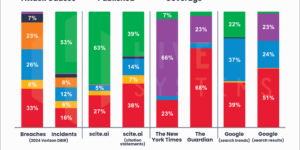The brokerage industry has changed “utterly and fundamentally” over the past 30 years from a risk transfer function to much more of an advisory role, according to Dominic Christian, executive chairman, Aon Benfield, London.
Christian spoke at an event this week held by Litmus Analysis on the topic “What Becomes of the Broker Market?”
“When I started in the business, the broker’s role was in reinsurance structuring, market intelligence, negotiation, policy administration and claims management,” he affirmed. “In the 1990s things began to change to providing advisory services. Now brokers provide advisory, consultative and transactional services.”
He attributed this evolution to the fact that risks became more complicated and losses much more expensive. Indeed, in 1999 there were a series of 19 catastrophes, each of which had a price tag of more than $1 billion, Christian recalled.
Crucially, he added, at that point, capital markets began to enter the market to provide derivative products. In fact, Christian said the OTC derivatives sector now totals $21.1 trillion, compared with property and casualty reinsurance at approximately $165 billion and P&C insurance at approximately $2 trillion.
Brokers increasingly began to realize they had to change their understanding of risk and many began focusing on clients’ capital needs, which Aon has determined is at the top of the list of concerns of industry leaders in the insurance and reinsurance sectors.
When he began working as a reinsurance broker in the 1980s, clients asked two questions: am I taking too much risk and am I transferring my risk efficiently, Christian noted.
“Insurance companies now want a different level of conversation. CEOs are now interested in how products or insurance can support product development,” he said. “This doesn’t mean we don’t talk about transactions but now we also have to talk about risks across financial advisory services. We’ve become financial risk advisers.”
He sees the brokerage industry dividing up between companies that provide a wide range of risk advisory services and those that primarily handle the transactional side.
“There is room for brokers that are essentially transaction brokers, provided they understand the scale of their opportunity,” he said, noting that far more investment and intellectual capital is needed to get involved with a full range of advisory services.
As broker competition has broadened dramatically, they need to define who their competitors are and what they’re good at, he said.
For now and the foreseeable future, Christian identified three things that remain true in terms of what clients ask their brokers:
- What risks do I have exposure to, which you can help me understand better?
- Into what markets shall I transfer those risks (which includes reinsurers as well as the capital markets)?
- How can you help me grow my business?
Even if a broker were to represent 10,000 clients, each client still has to feel valued and be aware of the value their broker provides, Christian indicated, noting that brokers need to put the client front and center, rather than focusing, as many do, on the market.




















 Mixed Bag: What Trump 2.0 Tariffs, DOGE Activities Mean For Insurers
Mixed Bag: What Trump 2.0 Tariffs, DOGE Activities Mean For Insurers  California Vocational School CEO Charged With 23 Counts of Insurance Fraud
California Vocational School CEO Charged With 23 Counts of Insurance Fraud  Wildfire Smoke’s Health Risks Linger Long After Homes Escape Burning
Wildfire Smoke’s Health Risks Linger Long After Homes Escape Burning  Most Distracting Holiday Songs for Drivers Ranked
Most Distracting Holiday Songs for Drivers Ranked 





